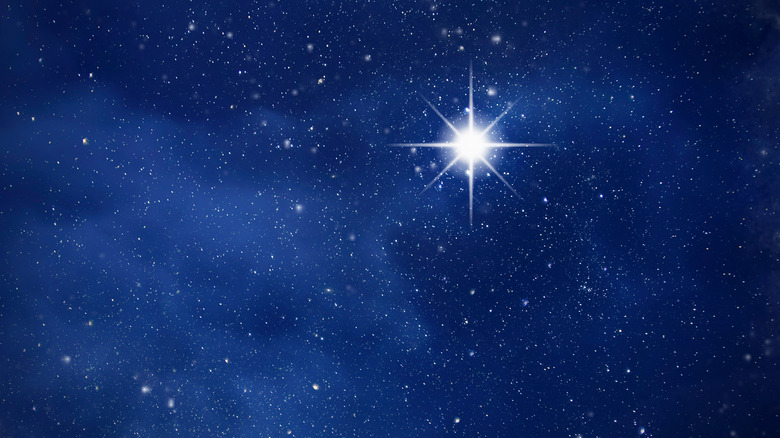The Reason The Star Shape Doesn't Look Like A Real Star
Before we begin, let's clear up some English. "The star's shape" means the little symbol people write on paper. You know, a five-pointed figure composed of two isosceles triangles, aka a pentagram. Also, pentagrams aren't pentacles. A penta-"cle" is a pentagram inside a cir-"cle," an ancient symbol describing the unification of the elements. And to quote Forest Gump, "That's all I've got to say about that."
If you drew an actual star's shape on paper, it would look like a circle. Or if you have experience with figure drawing, you could make those little dotted lines on it to make it look 3D, like a sphere. Stars — the actual flaming, writhing balls of gas — are actually "oblate spheroids" because their dimensions aren't perfectly equal. They're smooshed a bit because of their spin. Same thing with Earth, by the way, as Earth How depicts.
So back to the star shape. In a general sense, you can't draw a circle and say, "it's a star," because presumably that wouldn't work too well for the discipline of mathematics. It would also cause complications for kids in school. The pentagram is a better folk choice for a star shape because when you look up at the night sky, what do you see? Stars look sphere-ish enough, but with spikes around the outside, right? That twinkle, twinkle of little stars is how we see their light, as Smithsonian Magazine explains. Light bounces, and causes some star-shaped confusion for the eye.
Different stars for each person
When starlight hits the atmosphere, it's knocked off course like any other wave — radio waves, sound waves, and so on. Atmospheric heat, pressure, particulates, and the like bend and distort the light to differing degrees in a process referred to as "atmospheric scintillation," as Sky at Night explains. This makes the star's pointy arms — a visual impression of its light — looked stretched out, or blurred. Light from farther objects is distorted even more, and appears more blurred. This is also why closer objects don't blur so much.
As for the number of star arms, rays, points, what have you, it depends on the human eye. As MinutePhysics goes into on YouTube, the number of rays depends on how many "suture lines" a person has in the lens of their eye. Suture lines are lines where pieces of the lens fused during development. Four suture lines means four rays of a star. Five lines means five rays, and so on. We can see the same phenomenon in cameras. A camera with four lenses shows points of light with four rays, a camera with six lenses shows points of light with six rays, and so on. This creates the "diffraction pattern" that an individual sees when a star's light strikes the eye after passing through the atmosphere.
In a really cool twist, each person sees a different pattern. Each human eye develops unique suture lines, so each person sees stars differently.

